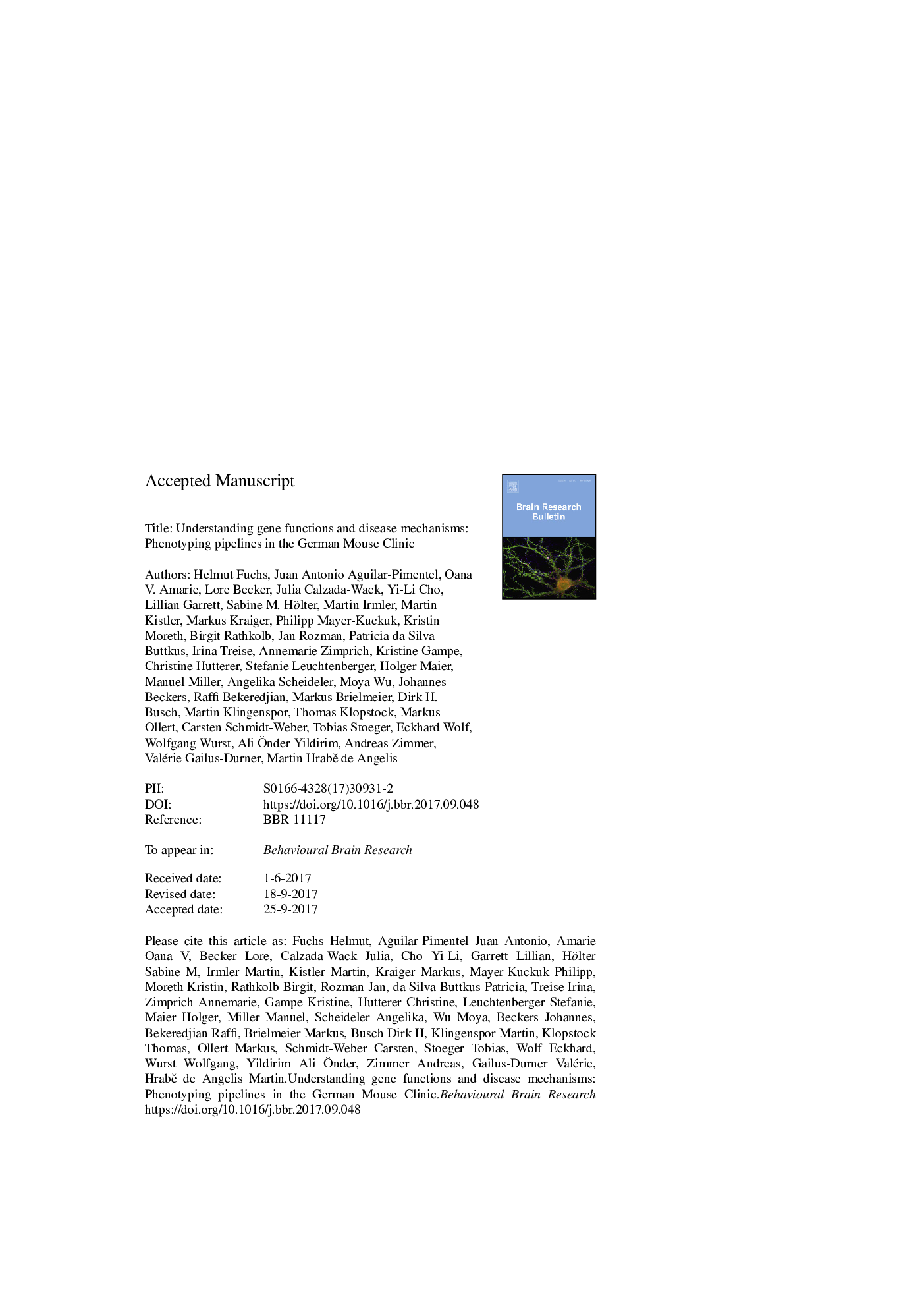| Article ID | Journal | Published Year | Pages | File Type |
|---|---|---|---|---|
| 8837665 | Behavioural Brain Research | 2018 | 27 Pages |
Abstract
Since decades, model organisms have provided an important approach for understanding the mechanistic basis of human diseases. The German Mouse Clinic (GMC) was the first phenotyping facility that established a collaboration-based platform for phenotype characterization of mouse lines. In order to address individual projects by a tailor-made phenotyping strategy, the GMC advanced in developing a series of pipelines with tests for the analysis of specific disease areas. For a general broad analysis, there is a screening pipeline that covers the key parameters for the most relevant disease areas. For hypothesis-driven phenotypic analyses, there are thirteen additional pipelines with focus on neurological and behavioral disorders, metabolic dysfunction, respiratory system malfunctions, immune-system disorders and imaging techniques. In this article, we give an overview of the pipelines and describe the scientific rationale behind the different test combinations.
Keywords
Related Topics
Life Sciences
Neuroscience
Behavioral Neuroscience
Authors
Helmut Fuchs, Juan Antonio Aguilar-Pimentel, Oana V. Amarie, Lore Becker, Julia Calzada-Wack, Yi-Li Cho, Lillian Garrett, Sabine M. Hölter, Martin Irmler, Martin Kistler, Markus Kraiger, Philipp Mayer-Kuckuk, Kristin Moreth, Birgit Rathkolb, Jan Rozman,
